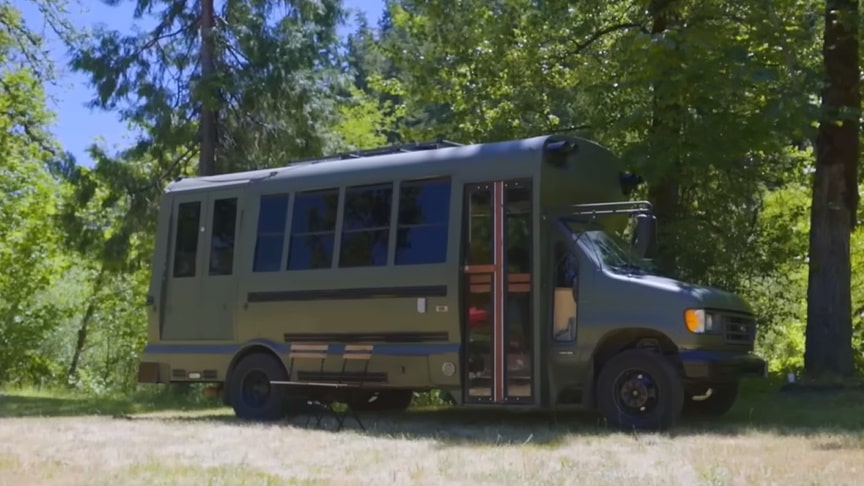Join Gene and Shay on an inspiring tour of their 2003 mini school bus conversion, where every decision was carefully planned after years of experience on the road. In this video, they share how they built their perfect tiny home, filled with vintage finds, clever storage solutions, and a fully functional kitchen. Whether you’re interested in bus life, building a bus conversion, or planning your own tiny home, this tour is full of practical advice and inspiration.
source.image: Tiny Home Tours
Spacious Kitchen for Full-Time Bus Life Gene and Shay’s kitchen takes up the most space in their bus conversion—and for good reason! They love to cook, and after three years of living in a van with a tiny kitchen, they knew they needed more room. The kitchen is equipped with a three-burner propane stove, a deep farmhouse sink, and a stand-up fridge with freezer. With custom drawer storage and beautiful thrifted décor, this space combines functionality with the cozy, vintage feel they were aiming for.
Clever Living & Dining Space The living area doubles as a dining room and guest bed, with a DIY couch made from memory foam cushions. The dinette transforms into a bed and also serves as a workspace during the day. Gene and Shay opted for an undermounted 12V AC unit to save rooftop space for solar panels, making the area feel larger and more open. They even built a special “litter throne” under one of the dinette chairs for their cats, showing that you can live tiny without sacrificing pet comfort.
Advertisement
Full-Size Closet vs. Shower Debate One of the most debated choices in their build was the decision to forgo a shower in favor of a full-size closet. For Gene and Shay, storage was more important than an onboard shower. They shower at gyms and truck stops, and they are thrilled with the closet space they have for their clothes. On the other side of the closet is a pull-out pantry that holds enough dry food for two to three weeks, allowing them to enjoy boondocking without frequent trips to town.











